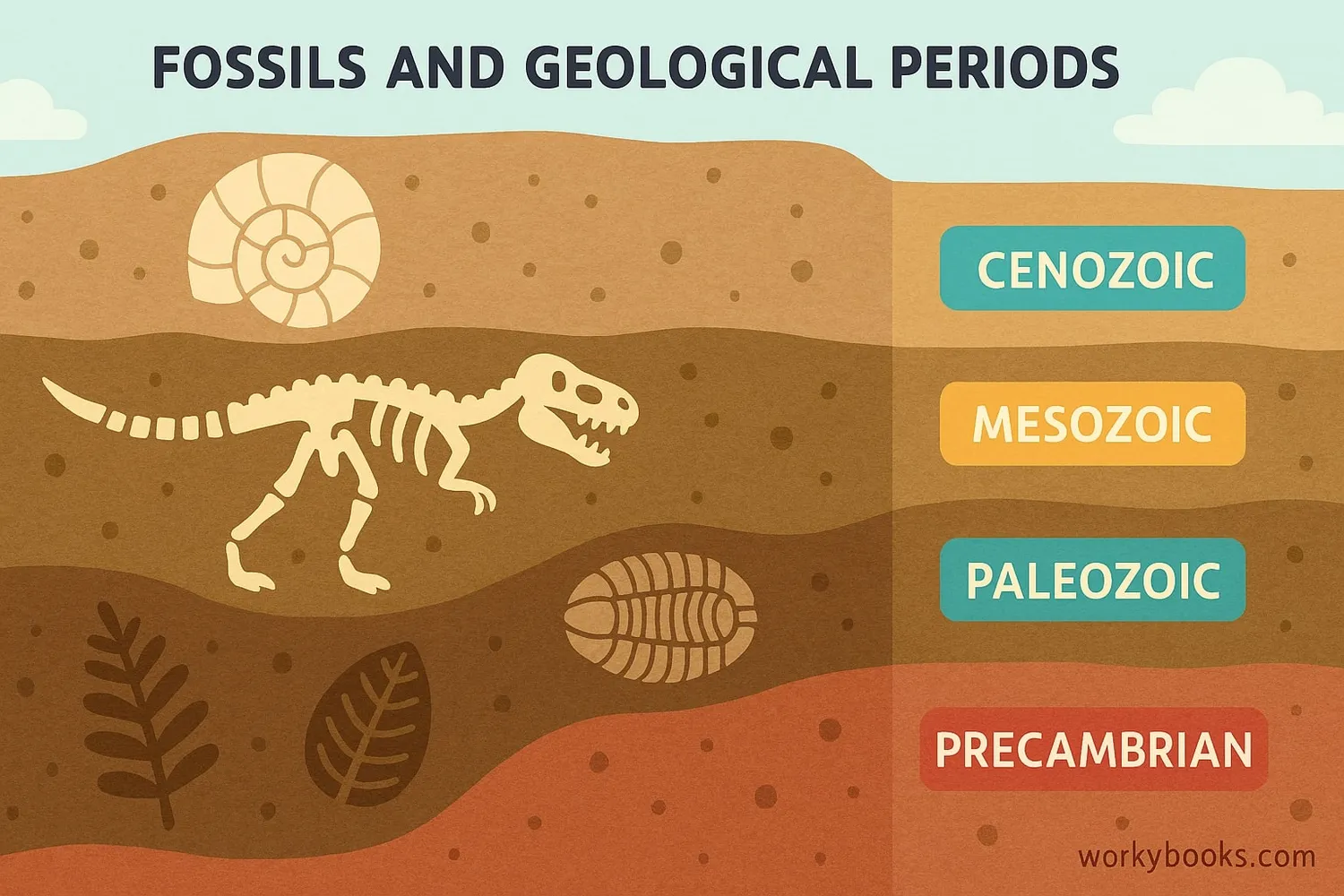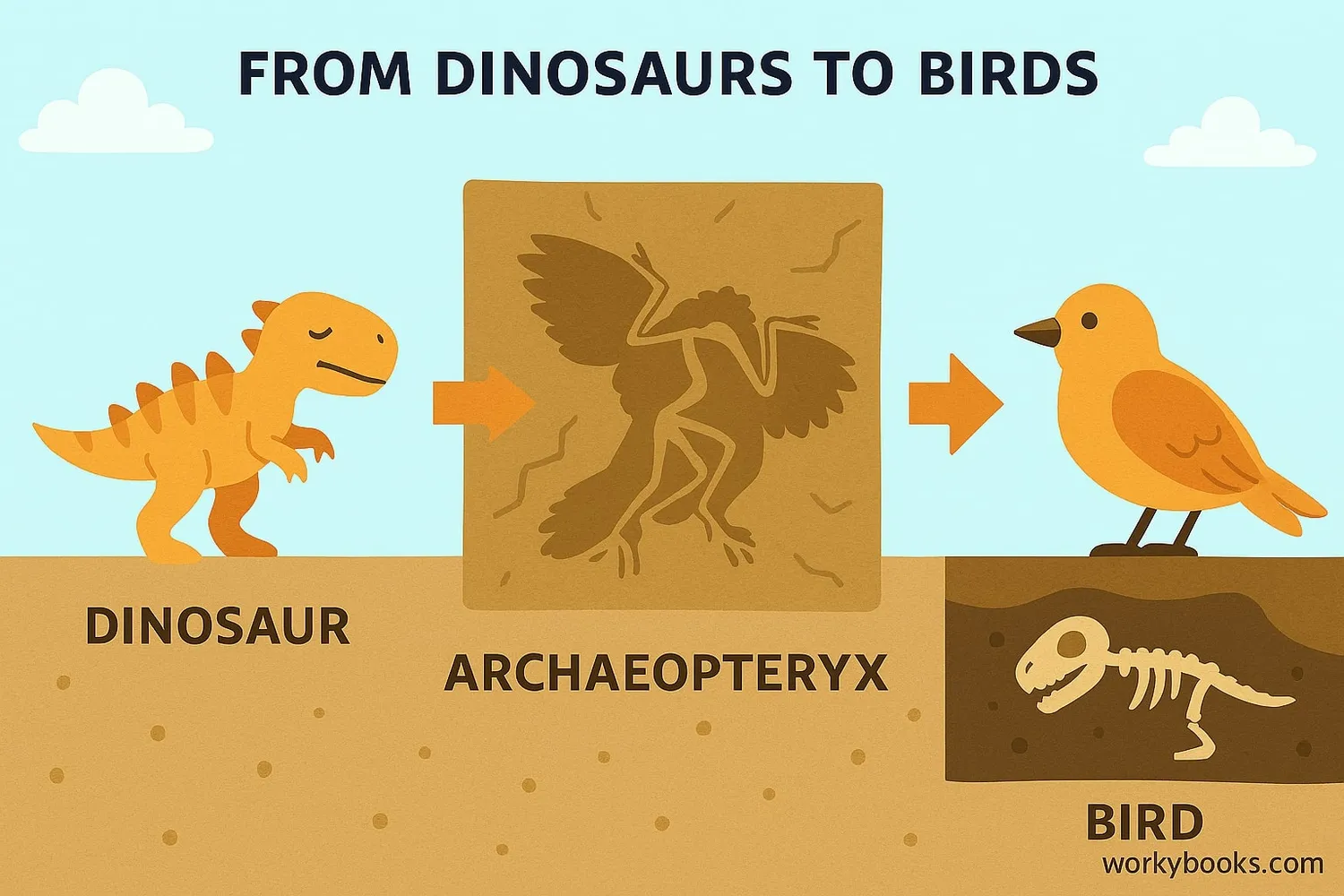Fossil Record - Definition, Examples, Quiz, FAQ, Trivia
Discover Earth's prehistoric history through preserved remains
What is the Fossil Record?

The fossil record is like Earth's photo album! It's the collection of all preserved remains and traces of ancient life found in rocks around the world. These fossils help scientists understand how life has changed over millions of years.
Fossils can be bones, shells, footprints, or even impressions of leaves. They form when living things are buried quickly by sediment and minerals gradually replace the original materials. The fossil record shows us which creatures lived long ago and how they're related to modern life.
Science Fact!
The oldest known fossils are stromatolites - layered structures created by cyanobacteria 3.5 billion years ago!
How Fossils Form

Fossil formation is a rare process that takes thousands to millions of years! Here's how it happens:
Death & Burial
An organism dies and is quickly buried by sediment
Decomposition
Soft tissues decay, leaving hard parts like bones
Mineralization
Minerals replace the original materials
Rock Formation
Sediments turn to rock over time
Discovery
Erosion exposes the fossil for discovery
Only a tiny fraction of living things become fossils. Conditions must be perfect for preservation to occur. The best fossils form when organisms are quickly buried in environments like:
• River sediments
• Ocean floors
• Volcanic ash
• Tar pits
Fossil Fact!
Most fossils we find are marine creatures because ocean environments provide ideal conditions for preservation.
Why the Fossil Record is Important

The fossil record is our main evidence for understanding life's history on Earth. Here's why it's so valuable:
Evolutionary Evidence
Shows how species changed over geological time
Geological Timeline
Helps date rock layers and establish Earth's history
Climate Clues
Reveals ancient environments and climate changes
Without the fossil record, we wouldn't know about:
• Extinct species like dinosaurs
• How major extinction events shaped life
• The origins of modern plants and animals
• How continents moved over time
Paleontologists (fossil scientists) continue to discover new fossils that help fill gaps in our understanding of Earth's history.
Fossil Record Quiz
Test your fossil knowledge with this quiz! Answer all 5 questions to see how much you've learned.
Frequently Asked Questions
Here are answers to common questions about fossils and the fossil record:
Fossil Record Trivia
Discover amazing facts about fossils and paleontology:
Size Extremes
The largest fossil ever found is a 122-foot long titanosaur dinosaur. The smallest is a single-celled organism fossil smaller than a grain of sand!
Accidental Discoveries
Many important fossils were found by accident! The first Tyrannosaurus rex fossil was discovered by a rancher searching for lost cattle in Montana.
Perfect Preservation
Some fossils preserve incredible details! Scientists have found dinosaur fossils with skin impressions, feathers, and even the contents of their last meals.
Ancient Understanding
Ancient Greeks found fossil seashells on mountains and correctly guessed that those areas were once underwater, showing early scientific thinking!


